At the 46th session of UNESCO's World Heritage Committee held at New Delhi, India, China's "Beijing Central Axis: A Building Ensemble Exhibiting the Ideal Order of the Chinese Capital" was successfully inscribed on the World Heritage List. How can you explore the scenic beauty of the Central Axis by public transport? Here are two recommended routes—
Experience the Majestic Central Axis of Beijing on Subway Line 8
The unique and grand order of Beijing Central Axis is extending underground through a special route: Beijing Subway Line 8.
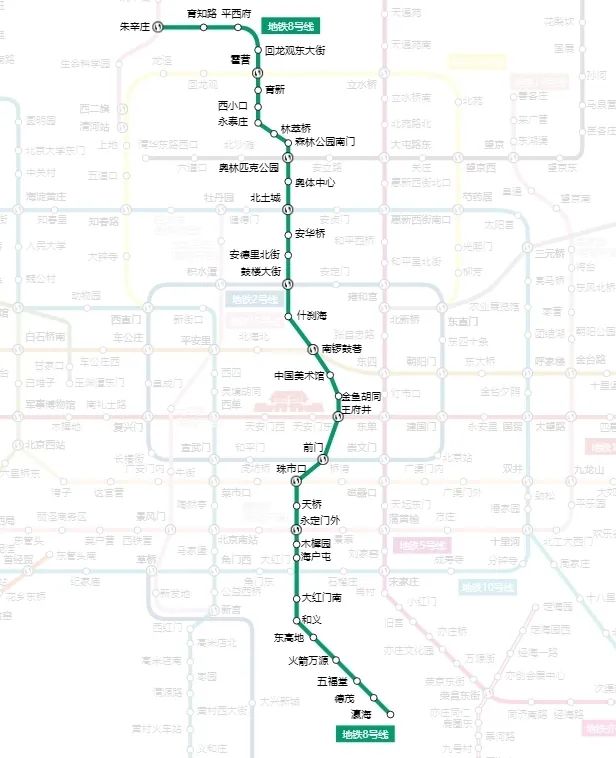
Running from north to south, Line 8 has 34 operational stations, connecting cultural landmarks such as Tianqiao, Qianmen, Wangfujing, Drum Tower, Shichahai Lake, and Nanluoguxiang Alley. Not only does Line 8 mirror the Central Axis on the map, but its station designs also align closely with this historical axis.
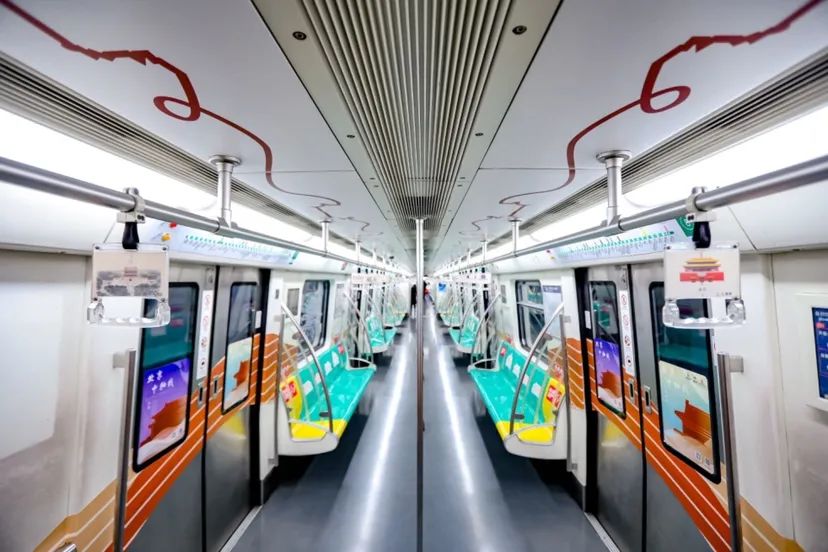
At Yongdingmenwai Station, "Central Axis Scenic View" features ultra-high-definition, high-refresh-rate LED matrix screens that update real-time imagery of the coffered ceiling art, creating a traditional Chinese landscape effect through fixed imagery. At Qianmen Station, "Central Axis Splendor" features a grand bird's-eye view of Beijing, centered on Zhengyang Gate. This display recreates the historical appearance of the ancient city's architecture, aiming to showcase the great cultural heritage of urban planning and construction history. It highlights the spatial layout and cultural essence of traditional Chinese urban planning and architecture, with Beijing as its representative. At Jinyu Hutong Station, "Abundant Fish Year After Year" display uses mosaic inlay techniques to showcase koi fish swimming and playing in a pond. The artwork incorporates the "fish and water" elements, which symbolize prosperity and happiness in Chinese tradition, bringing a lively and celebratory image to life.

In addition to the pervasive elements of the Central Axis throughout the stations, Beijing Metro has collaborated with the Beijing Central Axis Protection Foundation to create a unique "Central Axis Special Train" on Line 8. This train features designs that incorporate architectural elements from 15 Central Axis cultural heritage sites of Beijing. Each carriage is adorned with images showcasing the cultural heritage of the Central Axis on the doors, while the seats feature silhouette stickers of Central Axis buildings and the handrails have hand-drawn scenic views of the Central Axis. The special train also integrates digital content and experiences. Passengers can scan a QR code to access the "Cloud Central Axis" app, which offers an online exploration of the cultural heritage of Beijing Central Axis. This immersive experience provides passengers with a "visible, tangible, experiential, and touchable" journey, creating a moving cultural corridor along the Central Axis.
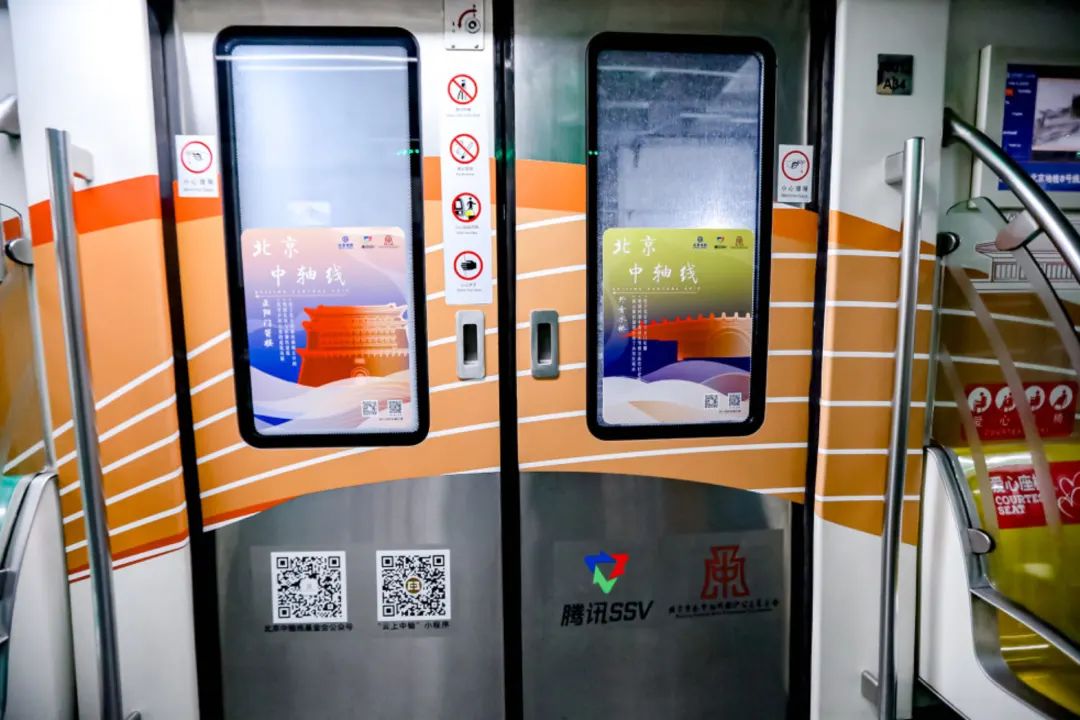
To further immerse passengers in the beauty of the Central Axis culture, Beijing Metro has organized a series of interactive activities. In celebration of the full opening of Line 8, the theme event "From South to North: Explore the Most Beautiful Central Axis" was launched. This event combines online and offline engagement, allowing passengers to experience the unique charm of Beijing Central Axis while riding the subway.
In early August, Beijing Metro will continue to host the "Central Axis Cultural Stamp Collection Activity" at selected stations on Line 8. This initiative aims to further promote Beijing Central Axis culture, advocate for civilized subway travel, enhance the passenger experience, and create a more respectful and engaging travel environment.
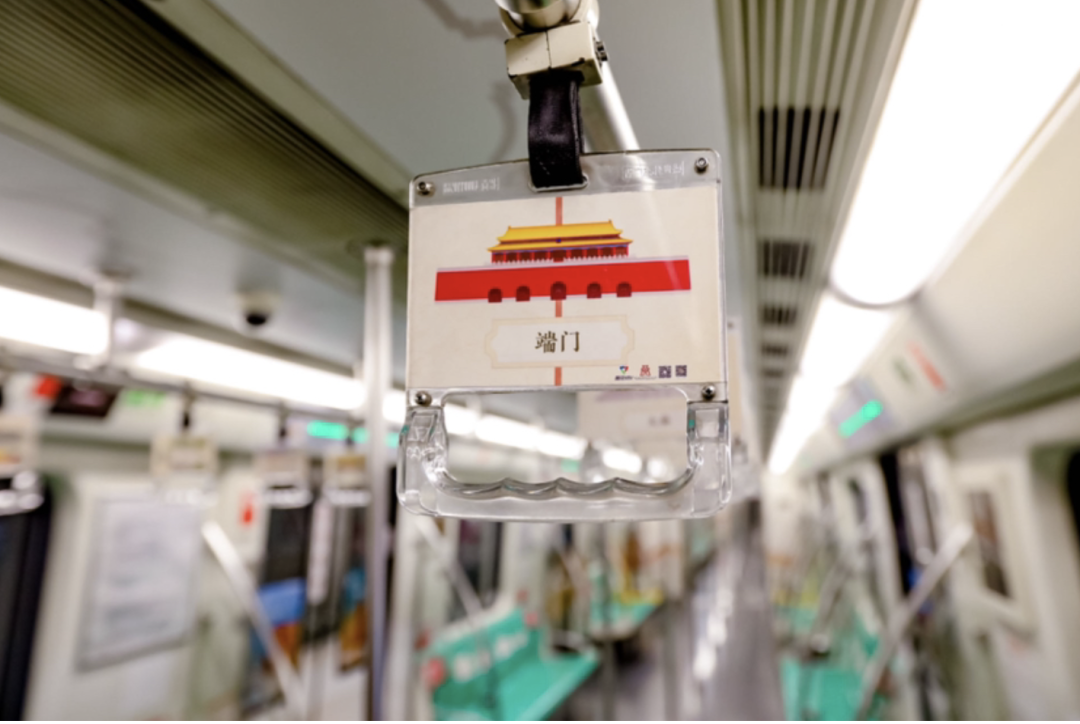
Every day more than 20,000 people take Bus Line 5 to check out the Central Axis
Want to explore the Central Axis? Don't miss the historic Bus Line 5! At 89 years old, it traverses much of old Beijing and runs close to the Central Axis. Currently, about 21,000 people ride Bus Line 5 daily, with peak days seeing over 33,000 passengers.
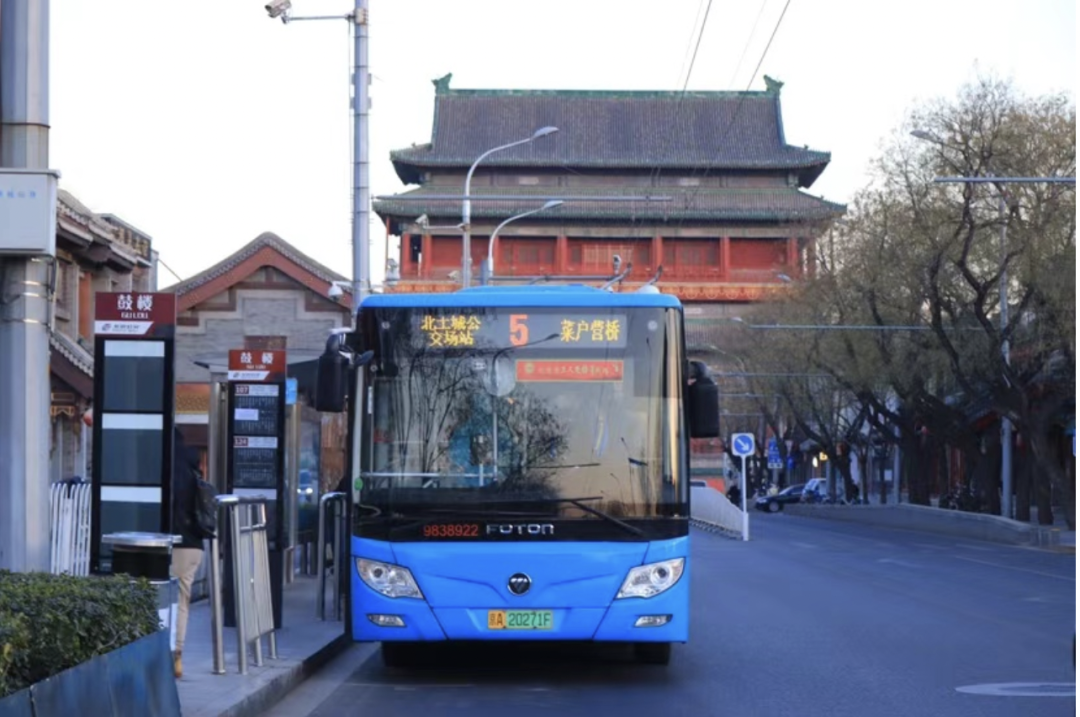
Hop on the Bus Line 5 and travel from Qianmen, Tian'anmen, Beihai, and Jingshan, all the way to Di'anmen, Wanning Bridge, and the Drum Tower. It's as if time slows down. With its red walls, green tiles, and serene waters, the ancient city of Beijing retains a timeless charm.
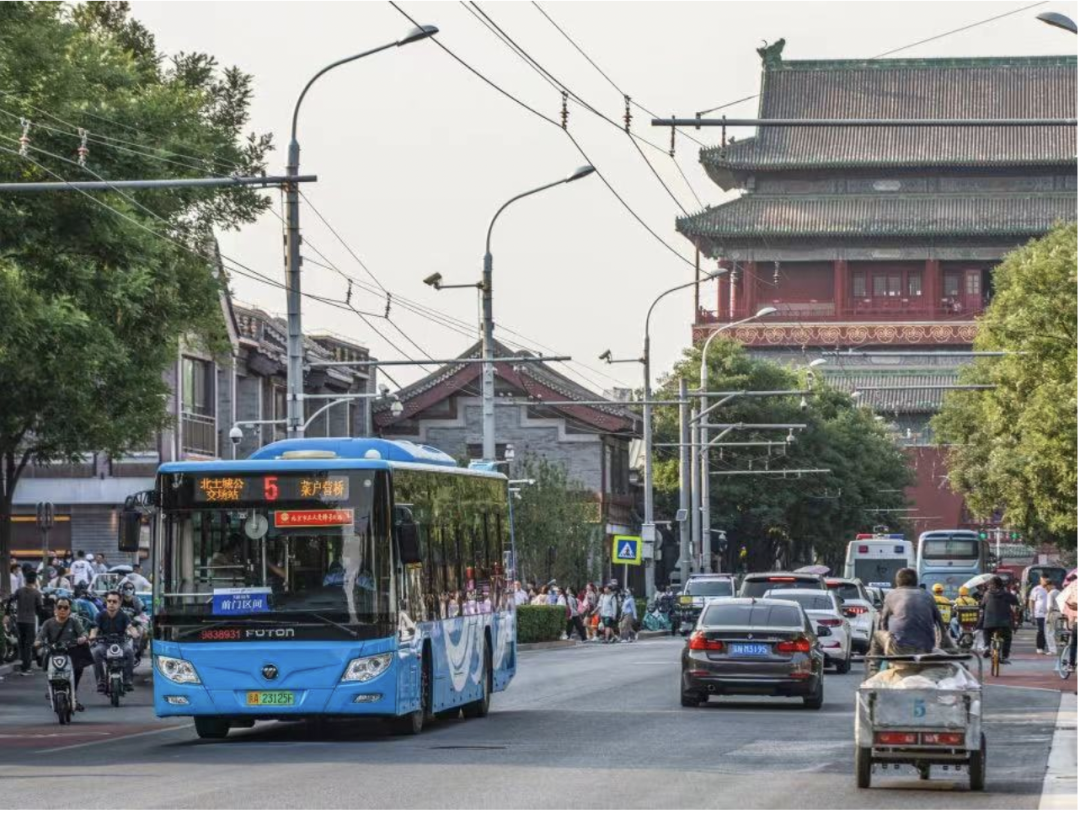
The Bus Line 5 in Beijing has a long history, having been launched on August 22, 1935, originally running from Donghua Gate to Xiangshan. After several disruptions, it resumed operation in October 1949, with continuous route optimizations. In 2004, the route was established from Desheng Gate to Caihuying, and in 2013, it was extended to Beitucheng Bus Station at the northern end. It traverses four districts—Fengtai, Xicheng, Dongcheng, and Chaoyang—making it one of the longest routes in the city.
Due to its proximity to the Beijing Central Axis, the Bus Line 5 passes by famous landmarks such as the Grand View Garden, Dashilan commercial zone of Qianmen Street, Tian'anmen Square, Jingshan Park, Beihai Park, Drum Tower, Shichahai Lake, and Deshengmen Gate. It is often referred to as the "Dragon Backbone Line." The Bus Line 5 has witnessed the development of Beijing and offers passengers a glimpse into the city's rich cultural heritage. Premier Zhou Enlai was also known to ride this bus line.
Zhang Tao, a bus driver on Bus Line 5 for nearly 16 years, has had daily interactions with the Beijing Central Axis. "Although the city's development and changes have been rapid over the years, the familiarity and warmth of old Beijing are still there," he said.
Zhang Tao has witnessed the changes brought about by Beijing's focus on protecting the Central Axis, strengthening cultural relic protection, improving the surrounding environment, and promoting the overall preservation and revival of the old city. "The roads are getting wider, the vehicles more comfortable, eco-friendly, and safe, and the number of tourists is increasing," Zhang Tao remarked. "When the bus passes Tiananmen, the passengers' continuous expressions of awe fill me with pride."
Located in the middle of Outer Di'anmendajie (St), on the eastern shore of Shichahai, Wanning Bridge is the oldest bridge on the Beijing Central Axis and a place the No. 5 Bus Line passes daily. "Wanning Bridge is over 700 years old. To protect it and minimize our impact, we switched from ‘big buses' to ‘small buses,' contributing our part to preserving the Central Axis," Zhang Tao explained.
The Bus Line 5 runs at intervals of 9 to 10 minutes. During the summer tourist season, two additional buses are added to the route between Desheng Gate and West Qianmen at 9 AM and 3 PM. The fleet monitors tourist areas daily and deploys support vehicles from other lines as needed to improve operational efficiency.



